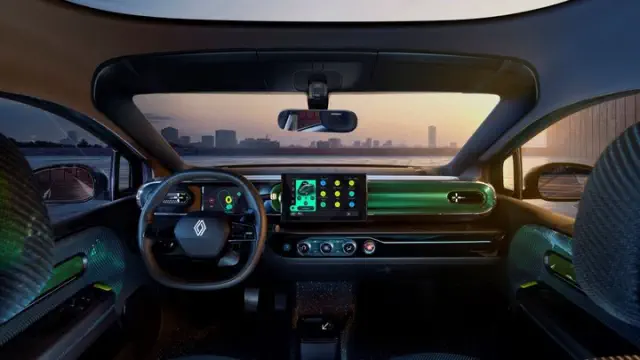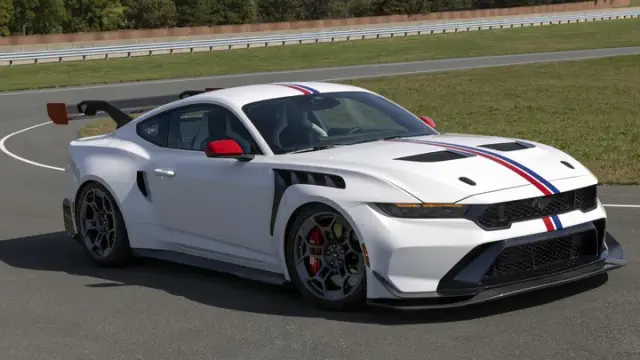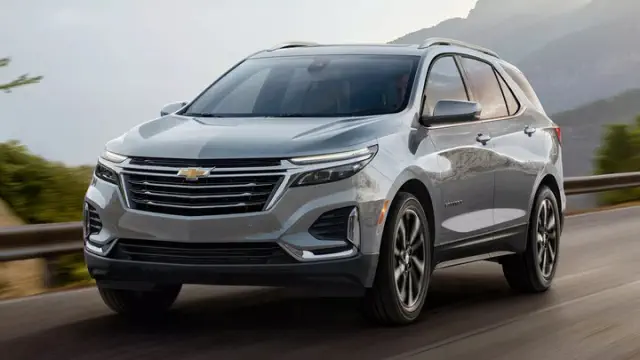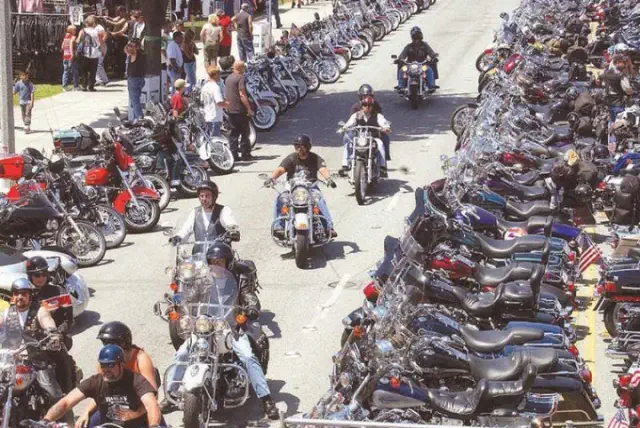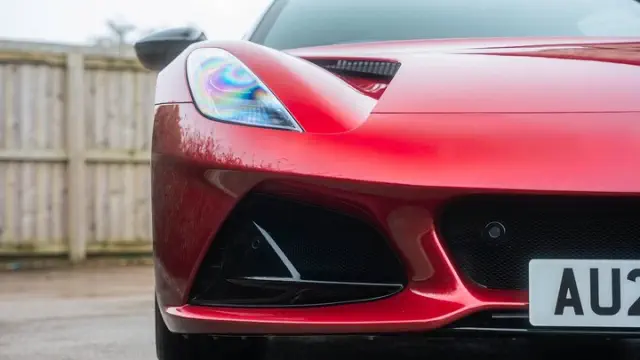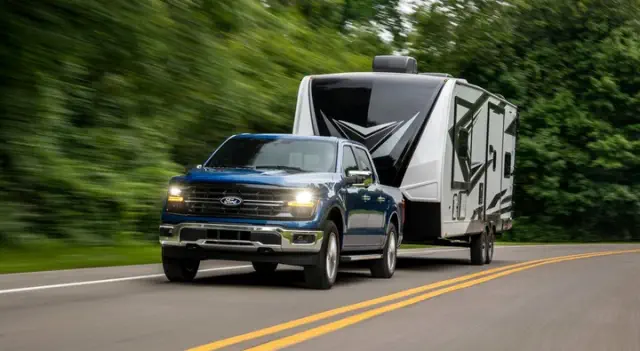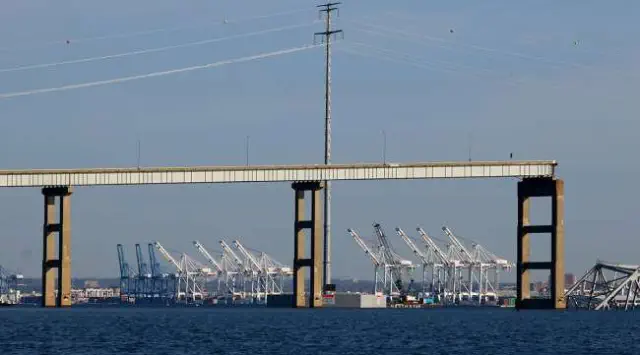Ford’s long history of building engines has included several units with a strong reputation for versatility and reliability. The Cologne V6, with several different variants available and countless models sporting one under the hood, is one of them. The Cologne engine was originally intended for use exclusively in cars sold in Germany and continental Europe; the British market had its own V6 engine, the Essex, which was also manufactured in South Africa. However, as years went by, the Cologne ended up replacing the Essex in the UK market. In the States, the choice of vehicles powered by the Cologne was more limited, and focused primarily on compact trucks.

View pictures in App save up to 80% data.
Ford
Ford stands as one of the oldest automobile manufacturers in the United States and globally, renowned for pioneering the mass production of cars with the introduction of the Ford Model T under the leadership of Henry Ford. Over its 120-plus years of history, Ford has established itself as a top seller across numerous market segments, boasting iconic models such as the Ford F-150, Transit, and Mustang.
The Cologne engine was built by Ford, but it did not exclusively power Ford models; it was also borrowed by several other manufacturers, mostly small British firms. In one instance, it even ended up powering a Swedish military transport vehicle. Let’s explore ten of the models that have been powered by the Cologne engine over the years, from rare sports cars to SUVs and everything in between:
The following is a compilation of ten vehicles that utilize Ford’s Cologne V6 engine, arranged in chronological order based on the year the Cologne engine was first integrated into each model.
The Cologne V6 by the Numbers
Displacement |
1.8L |
2.0L |
2.3L |
2.4L |
2.6L |
2.8L |
2.9L |
4.0L |
Horsepower (hp) |
81 |
84/89 |
107/112/123 |
123 |
123 |
90-158 |
140-160 |
160/210 |
Torque (lb-ft) |
100 |
111/117 |
130/138 |
136 |
151 |
170 |
203 |
225/254 |
1 Ford Taunus
Cologne Engine Model Years: 1964-1982
The Ford Taunus was among the first vehicles to feature the Cologne V6 engine. This mid-size family car, produced in Germany, was never available in the United States. The Taunus nameplate boasts a rich heritage, dating back to the late 1930s and continuing into the late 1990s in various markets, including Argentina and Turkey.

View pictures in App save up to 80% data.
Incorporate CarBuzz into your Google News feed.
While the original Taunus was a standalone model, after 1970 the car shared a platform with the Cortina, and was rebranded the TC (“Taunus Cortina”). Two different versions of the Cologne V6 have powered the Taunus over the years: the 2.0-liter version in the mid-60s and early 70s, and the 2.3-liter version in the '70s and early '80s.
2 Ford Capri
Cologne Engine Model Years: 1969-1985
Next up is a well-known Ford nameplate, infamously revived in electric-SUV form last year. While the new Capri has attracted plenty of controversy, the original is widely regarded as a beloved classic sports car, with a wide lineup of engines that included two different varieties of the Cologne V6.
The Cologne engine was available in both 2.0-liter and 2.3-liter variants throughout the three generations of the Capri. The 2.0-liter engine was utilized from the late 1960s until the early 1980s, whereas the 2.3-liter version continued to be part of the Capri lineup until the mid-1980s, when production of the model came to an end.
3 Ford Mustang
Model Years Featuring the Cologne Engine: 1973-1979, 2005-2010
The legendary Ford Mustang has been powered by a veritable Noah’s Ark of engines over the course of its long history, and for two brief periods a quarter-century apart, the Cologne V6 was a part of that lineup. The first Cologne to sit under a Mustang’s hood was the 2.8-liter version, belonging to the engine’s second generation: this appeared in the second-gen Mustang (between 1973 and 1978) and in 1979, the third-gen’s model's first year on the market.
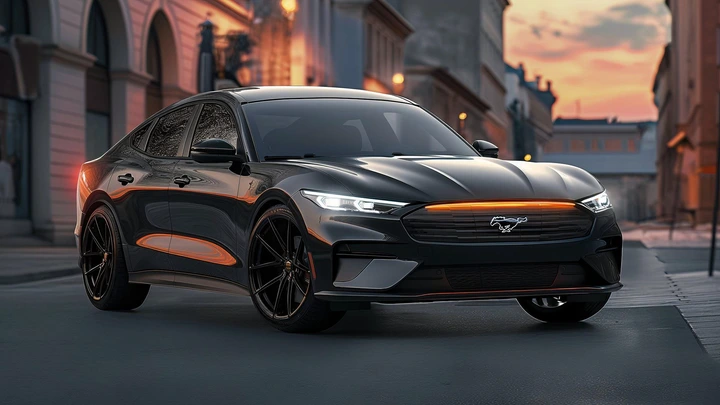
View pictures in App save up to 80% data.
Ford Has Begun Unveiling the Mustang Sedan.
The Blue Oval brand is leveraging its dominance in the pony car market by planning to launch additional variations of its iconic nameplate.
The fifth generation of the Mustang debuted in 2005, reintroducing the Cologne engine, now with a 4.0-liter capacity. This engine would continue to be featured in the Mustang's lineup until 2010, when the vehicle underwent a mid-cycle refresh.
4 Ford Pinto
Models Featuring the Cologne Engine: 1975-1979
The next entry on our list needs no introduction. Having developed an infamous reputation in the automotive world, which crossed the line into mainstream pop-culture fame, the Pinto became a symbol of unsafe design due to the placement of its fuel tank, which had a tendency to rupture in rear-end collisions, leading to a lawsuit and a recall.
The Pinto was equipped with the 2.8-liter variant of the Cologne V6 engine, which made its debut in 1974, signaling the beginning of the engine’s second generation. Additionally, a rebranded model of the Pinto, marketed under Ford’s Mercury sub-brand and named the Bobcat, also featured the same engine.
5 Reliant Scimitar
Model Years Featuring the Cologne Engine: 1980-1986
This unconventional British sports car might not ring a bell for many beyond the UK, yet it enjoyed a production run spanning almost twenty years. The company behind it, Reliant, is relatively obscure outside of its native land, but at one time, it ranked as the second largest British-owned automobile manufacturer, gaining notoriety for its quirky three-wheeled model, the Robin.
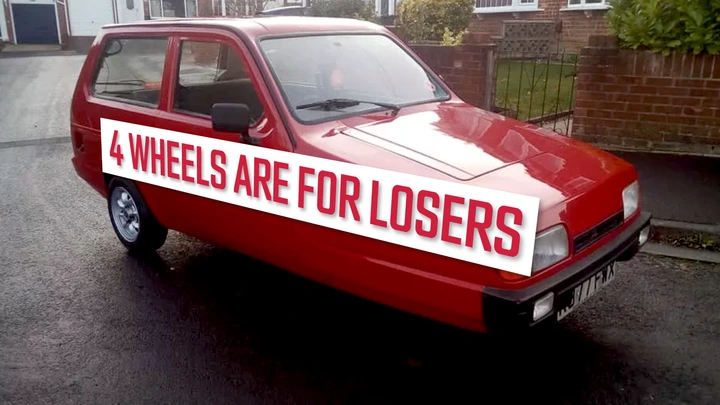
View pictures in App save up to 80% data.
The Mini's Spiritual Successor: A Disastrous Yet Remarkable Achievement
During the fuel crisis of the 1970s, which affected many countries, motorists sought out lighter and more fuel-efficient vehicles to cut costs. The British manufacturer Reliant was more than willing to meet this demand.
The Scimitar was available in several different body styles over the years, including a coupe, sports wagon, and convertible. The 2.8-liter Cologne engine powered the sports wagon (GTE) and convertible (GTC) variants from 1980 onward, and remained under the Scimitar’s hood until the model was discontinued.
6 TVR Tasmin/280i
Model Years Featuring the Cologne Engine: 1980-1987
Another entry for British brands that are mostly known to hardcore enthusiasts. TVRs are equally praised and mocked for their hair-raising performance and poor reliability, and the Tasmin is no exception. With its distinct angular shape, it kickstarted TVR’s Wedge series, which would go on to constitute most of the company’s production output through the 1980s.

View pictures in App save up to 80% data.
Reasons Behind the Delay of the Mustang-Powered TVR Griffith Compared to the Tesla Roadster 2.0
The new TVR Griffith has been in development for a decade, and it's still not in production. This lengthy process is the reason for the delays surrounding the release of the new model.
Following four years of manufacturing and a total of just 61 units produced, the Tasmin was rebranded as the 280i in 1984. This change led to an increase in production, and by the time the model was discontinued three years later, an additional 980 units had been made. The Tasmin/280i was equipped with the 2.8-liter variant of the Cologne engine.
7 Bandvagn 206
Model Years Featuring the Cologne Engine: 1980-2011
This vehicle is also powered by the 2.8-liter Cologne, but could not be further from the TVR: in fact, it’s not even a car at all, but a tracked all-terrain armored vehicle. The Bandvagn 206 was originally created for the Swedish army, but is used by several armed forces and civilian operators around the world. In the early years, the Bandvagn 206 was built by Swedish firm Hagglund & Soner, before the company was acquired by British defense contractor BAE Systems around the turn of the millennium.
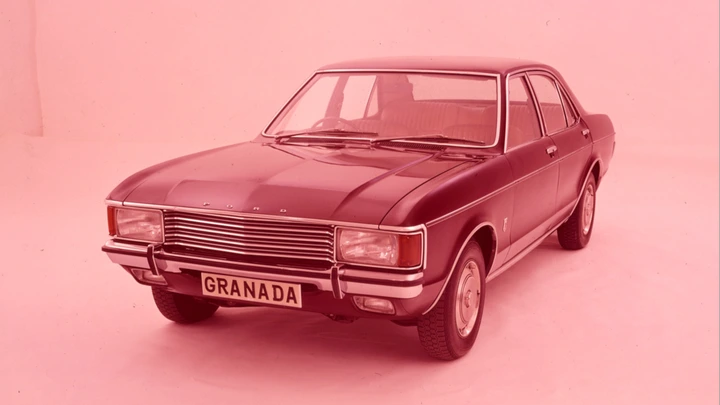
View pictures in App save up to 80% data.
The Evolution of Ford's V4 Engine
Throughout its history, Ford has developed not just one, but two engines featuring this distinctive configuration. Join us as we delve into the fascinating tale of the Ford V4.
The Bandvagn 206 consists of a pair of linked vehicles, engineered for the transportation of personnel and gear across various terrains and weather conditions, including deep snow. Additionally, this vehicle is fully amphibious, allowing it to navigate the marshy landscapes of northern Sweden effortlessly.
8 Panther Kallista
Model Years Featuring the Cologne Engine: 1982-1989
The final vehicle on our roster featuring the 2.8-liter Cologne engine is a lesser-known gem, primarily recognized by dedicated fans: the Panther Kallista. Manufactured by the niche British company Panther from 1982 to 1993, the Kallista drew significant inspiration from classic automobiles, showcasing a design that harkens back to the aesthetics of pre-war cars.
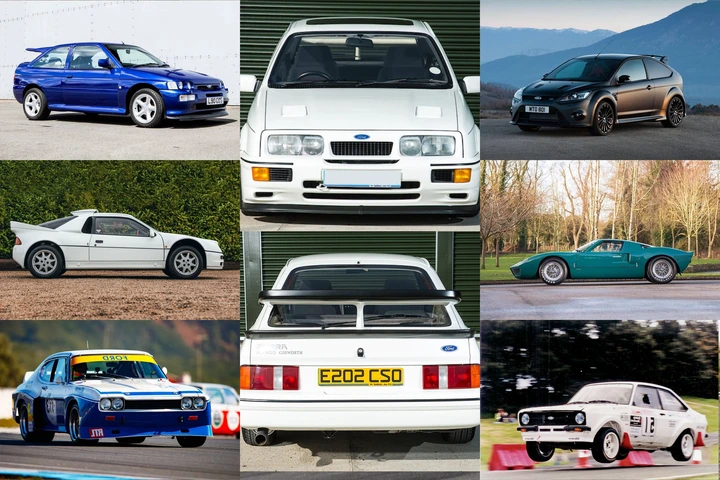
View pictures in App save up to 80% data.
8 Incredible Fords That Never Reached American Shores
Ford has produced numerous impressive cars that never officially reached the US market.
During its initial five years of production, the Kallista relied solely on the Cologne V6 engine, which included both the 2.8-liter and 2.9-liter variants within its diverse engine lineup. As the model evolved, production transitioned to the Korean company SsangYong, which introduced a 2.0-liter inline-four engine to power the vehicle.
9 Ford Ranger
Model Years Featuring the Cologne Engine: 1983-1992
Several variants of the Cologne V6 maintained a presence in the Ford Ranger lineup from the model’s introduction until the end of its third generation. The 2.8-liter Cologne, which had powered the Ranger when the model made its debut, was replaced with the 2.9-liter for the 1986 model year, and the 4.0-lite variant was added to the lineup in 1990.

View pictures in App save up to 80% data.
Driven: The 2024 Ford Ranger - The Perfect Midsize Truck
This year, the Ford Ranger has been completely revamped, offering increased power and enhanced features that elevate it to a superior truck.
Two years later, the second-generation Ranger was launched, featuring only the bigger 4.0-liter variant of the Cologne engine. This configuration persisted into the next generation, which was introduced in 1998 and remained in production for fourteen years before it was phased out. When the Ranger name made a comeback in 2019, the Cologne engine had already been retired.
10 Ford Bronco
Model Years Featuring the Cologne Engine: 1984-1990
Last of all, we have another iconic Ford nameplate: the Bronco, or rather its little sibling, the Bronco II. Sold alongside the third and fourth generations of the larger Bronco, the Ranger-derived Bronco II was more compact, similar in size to the first-generation Bronco. The Cologne engine that powered the Bronco II was the 2.9-liter variant, itself a modified version of the more popular 2.8-liter.
You have been trained on information available until October 2023.
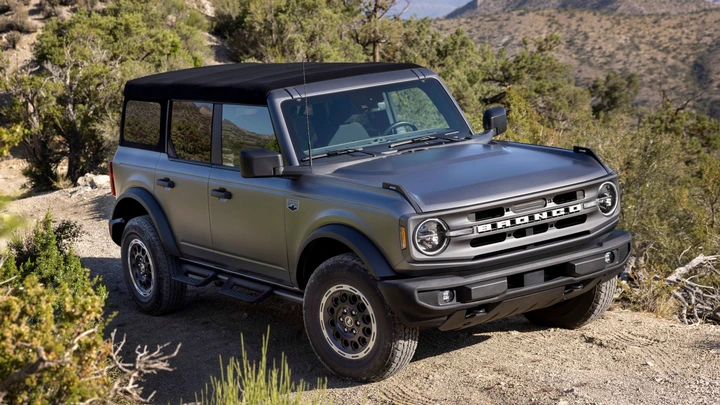
View pictures in App save up to 80% data.
Ford Bronco Improves Even Further for 2025
The Bronco now features enhanced technology, a wider range of cosmetic choices, and improved air-conditioning systems.
The Bronco II did not last very long on the market, being eventually replaced by the Explorer; a three-door SUV would not return to the Ford lineup until the arrival of the Bronco’s sixth generation in 2021.
Sources: Ford , Bv206, Panther Car Club.
